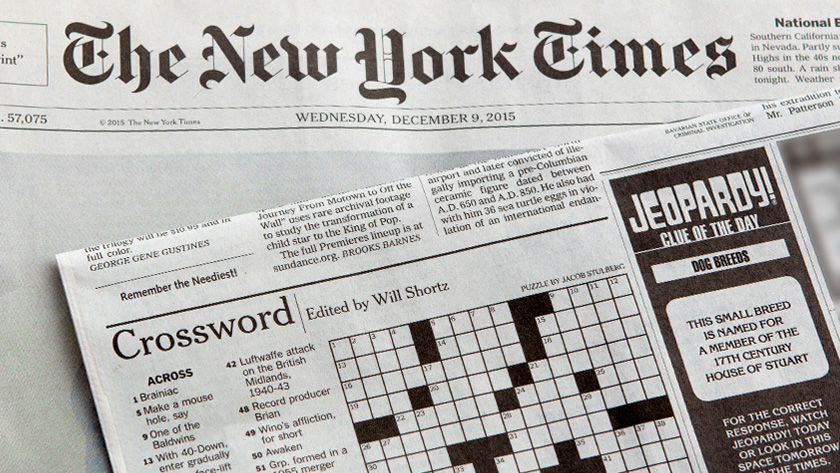
In the realm of puzzle enthusiasts and wordplay aficionados, few challenges rival the New York Times (NYT) Crossword. The iconic black and white grid, interspersed with an array of clues ranging from the cryptic to the straightforward, has become a daily ritual for many. However, what happens when the thrill of the hunt turns into a battle of attrition, leaving the solver utterly exhausted? Let’s delve into the world of NYT Crossword fatigue, exploring clues, the intricacies of the crossword puzzle, and the toll it takes on the mind.
Clue by Clue: Unraveling the Mystery
The heart of any crossword puzzle lies in its clues. The NYT Crossword, renowned for its clever and often witty hints, presents a unique challenge to solvers. Each clue is a carefully crafted enigma, designed to lead the mind down a labyrinth of linguistic twists and turns. From straightforward definitions to wordplay riddles, the clues demand a diverse set of cognitive skills.
The beauty of NYT Crossword clues lies in their ability to traverse various topics, from history and literature to pop culture and word origins. As solvers engage with these clues day after day, the mental gymnastics required can lead to a sense of both accomplishment and exhaustion.
Crossword Puzzles: A Dance of Words and Spaces
The NYT Crossword is not just a collection of individual clues; it’s a choreographed dance of words and spaces that demands precision and creativity. The crossword grid itself, with its black and white squares, serves as a canvas where words intersect and intertwine.
One distinctive feature of the NYT Crossword is the use of a barred grid, also known as a diagramless puzzle. Unlike traditional crosswords, where the black squares are explicitly indicated, barred grids require solvers to determine the placement of black squares based on the provided clues. This adds an extra layer of complexity, turning the solving experience into a puzzle within a puzzle.
The NYT Crossword Bit: A Daily Mental Workout
For many enthusiasts, the NYT Crossword is not just a pastime; it’s a daily mental workout. The puzzle challenges the mind to think critically, draw connections between disparate pieces of information, and wield the English language with finesse. As one progresses through the grid, a sense of accomplishment accompanies each successfully completed section.
However, this mental exercise can also lead to fatigue, especially for those committed to solving the puzzle day in and day out. The brain, much like a muscle, can become strained when subjected to constant cognitive challenges. As the difficulty level of the puzzles varies throughout the week, solvers may find themselves teetering on the edge of mental exhaustion.
Phrases and Faqs: Navigating the Linguistic Landscape
The NYT Crossword is not merely a test of general knowledge; it’s a linguistic labyrinth where phrases and idioms reign supreme. The clues often rely on wordplay, puns, and double entendres, requiring solvers to approach them with a keen understanding of language nuances.
Frequently encountered phrases in the NYT Crossword become familiar territory for seasoned solvers. From common abbreviations to literary quotations, the puzzle weaves a tapestry of language that spans the spectrum of human expression. However, this familiarity can breed its own form of fatigue, as solvers grapple with the ever-expanding lexicon presented by the crossword.
Mind Fatigue: The Hidden Cost of Crossword Puzzling
While the NYT Crossword is a source of intellectual stimulation, it’s essential to acknowledge the toll it can take on the mind. The relentless pursuit of answers, the decoding of cryptic clues, and the mental gymnastics required can lead to a state of cognitive fatigue. Solvers may find themselves grappling with mental exhaustion, akin to the weariness experienced after a strenuous mental workout.
The addictive nature of crossword puzzles, coupled with the desire to conquer each daily challenge, can sometimes lead to burnout. As solvers push their mental faculties to the limit, it becomes crucial to recognize the signs of fatigue and practice moderation. Taking breaks, engaging in other forms of relaxation, and allowing the mind to recharge are essential strategies for maintaining a healthy crossword-solving routine.you may also like to know about.
Cracking the Code: Strategies for Crossword Enthusiasts
For those ensnared in the world of the NYT Crossword, navigating the fine line between challenge and fatigue requires a strategic approach. Here are some tips for crossword enthusiasts to maintain a healthy and enjoyable solving experience:
- Moderation is Key: Avoid the temptation to tackle every puzzle with unwavering determination. Give your mind the space to breathe by solving puzzles in moderation.
- Diversify Your Puzzle Portfolio: Explore puzzles from different sources and with varying difficulty levels. This diversification can provide a refreshing change of pace and prevent monotony.
- Embrace Collaboration: Consider solving puzzles with friends or joining online crossword communities. Collaboration not only adds a social dimension but also offers different perspectives on clue interpretation.
- Take Breaks: When fatigue sets in, take a step back. Engage in activities that allow your mind to relax, whether it’s a walk in nature, a favorite hobby, or simply some quiet time.
- Celebrate Small Wins: Recognize and celebrate each solved clue or section. Breaking the puzzle into smaller victories can make the overall experience more enjoyable and less overwhelming.
Conclusion: Navigating the Crossword Conundrum
The NYT Crossword, with its intricate clues and linguistic acrobatics, is a captivating journey through the landscape of words. As enthusiasts immerse themselves in the daily challenge, it’s essential to strike a balance between the thrill of solving and the potential for mental fatigue. By approaching the crossword with mindfulness, embracing variety, and prioritizing mental well-being, solvers can crack the code to a sustainable and rewarding puzzle-solving experience.


